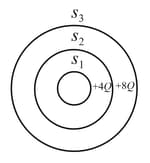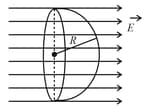Embibe Experts Solutions for Exercise 1: EXERCISE
Embibe Experts Physics Solutions for Exercise - Embibe Experts Solutions for Exercise 1: EXERCISE
Attempt the practice questions from Exercise 1: EXERCISE with hints and solutions to strengthen your understanding. Gamma Question Bank for Medical Physics solutions are prepared by Experienced Embibe Experts.
Questions from Embibe Experts Solutions for Exercise 1: EXERCISE with Hints & Solutions
An electric dipole consists of two opposite charges each of magnitude separated by a distance . The dipole is placed in an external field of . The maximum torque on the dipole is
A point lies on the perpendicular bisector of an electric dipole of dipole moment . The distance of $B$ from the dipole is ( is much larger than the size of the dipole). The electric intensity at is proportional to
The electric field due to a point charge at a distance from it is . The magnitude of the charge is
The net flux passing through a closed surface enclosing unit charge is
A uniformly charged conducting sphere is having radius and surface charge density . The total flux leaving the Gaussian surface enclosing the sphere is
are three concentric spherical shells, as shown in figure. and have charge and respectively, whereas is uncharged. Find the ratio of the flux passing through to that through

If is distance measured from centre of a charged shell and is its radius, then the graph which may correctly represent variation of electric field is
The flux through the hemispherical surface in the figure shown below is

